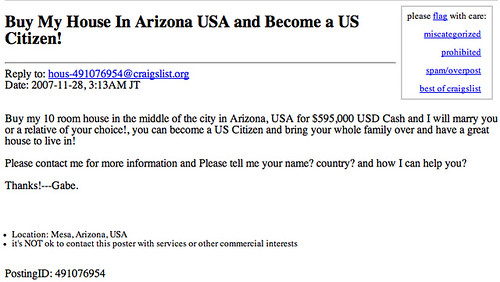Viral is not word of mouth
A bone to pick with my marketing colleagues. Viral marketing is distinct and separate from word of mouth marketing. Viral and word of mouth marketing are NOT interchangeable. Let me give you two examples of marketing.
I really like Matthew Ebel‘s new album, Goodbye Planet Earth. I think it’s a fantastic album, half radio drama, half space opera, and I gladly tell anyone and everyone I know about it. A certain percentage of people who trust my recommendations and have similar music tastes will probably go out and buy it and tell their friends about it, and so on. Ideally everyone in the world who likes Matthew’s style – whether they know it or not – will buy his album.
Word of mouth or viral?
Second example. I really like Matthew Ebel‘s new album, Goodbye Planet Earth. I think it’s a fantastic album, half radio drama, half space opera, and I’m going to write a Facebook application that will, when you add it to your profile, message every friend you have on Facebook. Permission? Well, clearly if you added the application you’ve given me permission to do whatever I want, so I won’t bother asking. As soon as any of those friends add the application to their profile, it will message all their friends, and so on.
Word of mouth or viral?
Word of mouth marketing to me requires consent. Yes, I can tell you all about what I’m interested in, but for it to go beyond just me requires your implicit consent and assistance in spreading the message.
Viral marketing does NOT require consent. The classic example used to explain viral marketing is Hotmail. Hotmail appended (and still does) a marketing message to every email you send, with or without your permission. You cannot opt out of it, you cannot change or suppress the message. It’s there and it spreads to everyone you message, and if they sign up, it “infects” their outbound communications.
These are more than semantic terms as well. To someone in pure marketing, they may be semantic, but to me, someone who is both a marketer and a technologist, they are different because the software development process has different outcomes. To develop a word of mouth application simply requires invitation capabilities in the software to allow you to spread the word. To develop a viral application, the software development process has to incorporate tools and functions to automatically pull and message all your contacts, ideally in as low profile a manner as possible so that by the time you notice, it’s too late. The virus has spread and moved on past you and you’re powerless to stop it.
If viral marketing as I’ve described it makes you feel uncomfortable, good. It should. Viral marketing is non-consentual marketing. Word of mouth marketing is consentual marketing. To the marketers who claim that viral and word of mouth are the same, ask this simple question: in any other context, especially the context of intimate relations, would you rather have the choice of consent or not?

